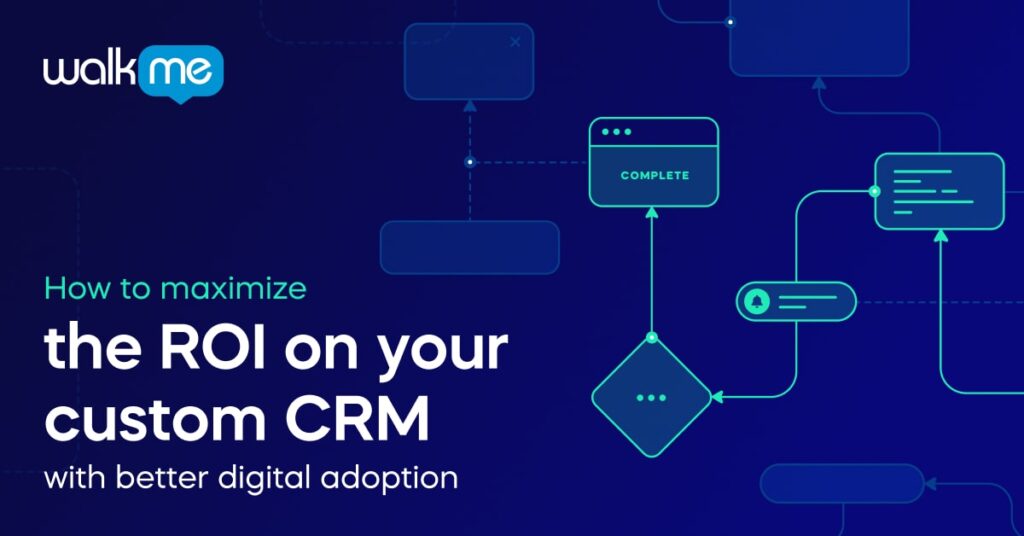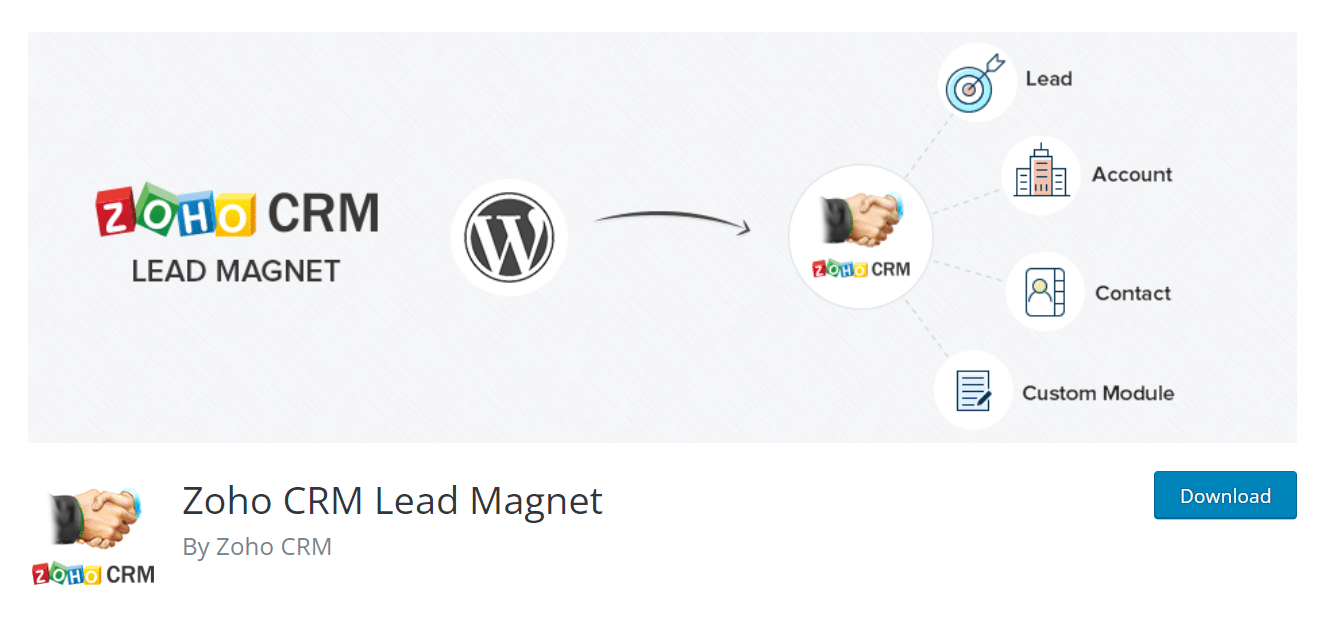
Unlocking ROI: Your Ultimate Guide to CRM Marketing Strategies and Boosting Profits
In today’s fiercely competitive business landscape, simply having a great product or service isn’t enough. You need to understand your customers, nurture relationships, and personalize your marketing efforts to stand out. This is where Customer Relationship Management (CRM) marketing comes into play. But it’s not just about implementing a CRM system; it’s about strategically using it to drive real results and, most importantly, maximize your Return on Investment (ROI). This comprehensive guide will walk you through the intricacies of CRM marketing, providing actionable tips and strategies to help you achieve significant ROI improvements.
Understanding the Fundamentals of CRM Marketing
Before diving into the nitty-gritty, let’s establish a solid foundation. CRM marketing is a data-driven approach to marketing that focuses on building and maintaining strong customer relationships. At its core, it leverages CRM software to collect, organize, and analyze customer data, enabling businesses to:
- Gain a 360-degree view of each customer.
- Personalize marketing messages and campaigns.
- Improve customer service and support.
- Increase customer loyalty and retention.
- Ultimately, drive revenue growth.
This isn’t just about sending out mass emails. It’s about understanding your customers’ needs, preferences, and behaviors. By using CRM, you can segment your audience, tailor your messaging, and deliver the right content at the right time, through the right channel. This level of personalization is crucial for engaging customers and driving conversions.
Why CRM Marketing Matters for ROI
The benefits of CRM marketing extend far beyond simply managing customer data. When implemented effectively, CRM marketing can significantly impact your ROI in several key areas:
- Increased Customer Retention: Happy customers are loyal customers. CRM helps you identify and address customer pain points, proactively resolve issues, and build long-lasting relationships. Retaining existing customers is often more cost-effective than acquiring new ones.
- Improved Customer Lifetime Value (CLTV): By understanding your customers’ buying habits and preferences, you can tailor offers and recommendations that encourage repeat purchases and increase their overall value to your business.
- Higher Conversion Rates: Personalized marketing campaigns are more effective at capturing customer attention and driving conversions. CRM allows you to target specific customer segments with relevant offers and messages, increasing the likelihood of a sale.
- Reduced Marketing Costs: By automating marketing tasks and targeting the right audience, CRM can help you streamline your marketing efforts and reduce wasted spending. You can eliminate the need to blast generic campaigns to everyone.
- Enhanced Sales Productivity: CRM provides sales teams with valuable customer insights, enabling them to close deals more efficiently. They can access customer history, track interactions, and prioritize leads based on their potential value.
In essence, CRM marketing is an investment that pays off by improving customer satisfaction, boosting sales, and ultimately, driving profitability. It’s not a magic bullet, but a strategic approach that, when implemented correctly, can transform your business.
Key Components of a Successful CRM Marketing Strategy
Building a successful CRM marketing strategy requires a well-defined plan and a commitment to execution. Here are the essential components:
1. Define Your Goals and Objectives
Before you even think about implementing a CRM system, you need to define your goals. What do you want to achieve with CRM marketing? Are you looking to increase sales, improve customer retention, or enhance customer service? Your goals should be specific, measurable, achievable, relevant, and time-bound (SMART). For example, instead of saying “Improve customer satisfaction,” aim for “Increase customer satisfaction scores by 15% within the next year.”. Having clear objectives sets the stage for success.
2. Choose the Right CRM Software
Selecting the right CRM software is crucial. There are numerous CRM platforms available, each with its strengths and weaknesses. Consider your business needs, budget, and technical capabilities when making your selection. Look for a CRM that offers features such as:
- Contact management
- Sales automation
- Marketing automation
- Customer service and support
- Reporting and analytics
- Integration with other business systems
Some popular CRM platforms include Salesforce, HubSpot, Zoho CRM, and Microsoft Dynamics 365. Do your research, compare options, and choose the one that best fits your specific requirements.
3. Data Collection and Management
CRM is only as good as the data it contains. Implement a robust data collection strategy to gather accurate and complete customer information. This includes contact details, purchase history, interactions, and preferences. Ensure your data is clean, organized, and regularly updated. Consider integrating your CRM with other data sources, such as your website, social media platforms, and e-commerce system, to create a centralized view of your customers.
4. Segmentation and Targeting
Once you have customer data, you can segment your audience based on various criteria, such as demographics, behavior, purchase history, and engagement. Segmentation allows you to tailor your marketing messages and campaigns to specific customer groups, increasing their relevance and effectiveness. For instance, you might create separate segments for new customers, loyal customers, and lapsed customers, tailoring your communication accordingly.
5. Campaign Design and Execution
Develop targeted marketing campaigns based on your customer segments. Use a variety of channels, such as email, social media, SMS, and direct mail, to reach your audience. Create compelling content that resonates with each segment and offers value. Personalize your messages using customer data to make them more engaging. Automate your campaigns to save time and ensure consistency. For example, you could set up automated email sequences for onboarding new customers, nurturing leads, or re-engaging inactive customers.
6. Automation and Workflow
CRM offers powerful automation features that can streamline your marketing processes and save you valuable time. Automate tasks such as lead nurturing, email marketing, social media posting, and task assignments. Automate workflows to trigger actions based on customer behavior or specific events. For example, you could automate the process of sending a welcome email to new subscribers or assigning leads to sales representatives based on their location.
7. Reporting and Analytics
Track your CRM marketing efforts and measure their performance. Use reporting and analytics tools to monitor key metrics such as conversion rates, customer retention, customer lifetime value, and ROI. Analyze your data to identify what’s working and what’s not. Use these insights to optimize your campaigns and improve your overall strategy. Regularly review your reports and make data-driven decisions to maximize your ROI.
Tips for Maximizing CRM Marketing ROI
Implementing a CRM system is just the first step. To achieve a high ROI, you need to optimize your strategies and continuously improve your approach. Here are some practical tips:
1. Focus on Data Quality
The accuracy and completeness of your customer data are critical. Regularly clean and update your data to ensure it’s reliable. Implement data validation rules to prevent errors. Train your team on proper data entry procedures. Poor data quality can lead to inaccurate analysis, ineffective targeting, and wasted marketing efforts.
2. Personalize Your Messaging
Customers want to feel valued and understood. Use customer data to personalize your marketing messages and campaigns. Address customers by their name, reference their past purchases, and tailor your offers to their specific interests. Personalization increases engagement and conversion rates. Consider using dynamic content that changes based on the recipient’s profile.
3. Automate Where Possible
Automation can save you time and improve efficiency. Automate repetitive tasks such as email marketing, lead nurturing, and task assignments. Use workflows to trigger actions based on customer behavior or specific events. Automation allows you to focus on more strategic activities.
4. Integrate Your CRM with Other Systems
Integrate your CRM with other business systems, such as your website, e-commerce platform, and social media channels. This creates a centralized view of your customers and enables seamless data flow. Integration improves data accuracy, streamlines processes, and provides a more holistic view of your business.
5. Provide Excellent Customer Service
Exceptional customer service is crucial for building loyalty and driving repeat business. Use your CRM to track customer interactions, resolve issues promptly, and provide personalized support. Empower your customer service team with the information they need to assist customers effectively. Happy customers are more likely to remain loyal and recommend your business to others.
6. Segment Your Audience Effectively
Don’t treat all customers the same. Segment your audience based on relevant criteria, such as demographics, behavior, and purchase history. This allows you to tailor your marketing messages and campaigns to specific customer groups, increasing their relevance and effectiveness. For example, you might create separate segments for new customers, loyal customers, and lapsed customers, tailoring your communication accordingly.
7. Track and Analyze Your Results
Regularly track your CRM marketing efforts and measure their performance. Use reporting and analytics tools to monitor key metrics, such as conversion rates, customer retention, and ROI. Analyze your data to identify what’s working and what’s not. Use these insights to optimize your campaigns and improve your overall strategy. Make data-driven decisions to maximize your ROI.
8. Train Your Team
Ensure your team is well-trained on how to use the CRM system and implement your CRM marketing strategies. Provide ongoing training and support to keep them up-to-date on the latest features and best practices. A well-trained team will be more effective at using the CRM to achieve your business goals.
9. Continuously Optimize
CRM marketing is an ongoing process. Continuously monitor your results, analyze your data, and optimize your strategies. Test different approaches, track your performance, and make adjustments as needed. Stay up-to-date on the latest CRM marketing trends and best practices. The business landscape is constantly evolving, so it’s crucial to adapt and refine your approach to stay ahead of the competition.
10. Don’t Neglect Mobile
With the increasing use of mobile devices, it’s crucial to optimize your CRM marketing efforts for mobile. Ensure your website, emails, and landing pages are mobile-friendly. Consider using SMS marketing to reach customers on their mobile phones. Provide a seamless mobile experience to engage customers on the go.
Measuring CRM Marketing ROI
Measuring the ROI of your CRM marketing efforts is essential for understanding their effectiveness and justifying your investment. Here are some key metrics to track:
- Customer Acquisition Cost (CAC): The cost of acquiring a new customer.
- Customer Lifetime Value (CLTV): The total revenue a customer is expected to generate over their relationship with your business.
- Conversion Rates: The percentage of customers who take a desired action, such as making a purchase or signing up for a newsletter.
- Customer Retention Rate: The percentage of customers who remain customers over a specific period.
- Churn Rate: The percentage of customers who stop doing business with you.
- Return on Marketing Investment (ROMI): The revenue generated from marketing activities divided by the marketing investment.
- Website Traffic and Engagement: Track website visits, time on site, bounce rate, and other engagement metrics to assess the effectiveness of your marketing campaigns.
- Lead Generation: The number of leads generated from your marketing efforts.
- Sales Revenue: The total revenue generated from your sales efforts.
By tracking these metrics, you can gain valuable insights into the performance of your CRM marketing campaigns and identify areas for improvement. Use reporting and analytics tools to automate the tracking process and generate regular reports. Compare your results to your goals and objectives to assess your progress.
Real-World Examples of CRM Marketing Success
To illustrate the power of CRM marketing, let’s look at a few real-world examples:
- Amazon: Amazon is a master of CRM marketing. They use customer data to personalize product recommendations, send targeted emails, and provide excellent customer service. Their personalized approach has contributed significantly to their success.
- Netflix: Netflix uses CRM to understand its subscribers’ viewing habits and recommend personalized content. They also use data to optimize their marketing campaigns and improve customer retention.
- Starbucks: Starbucks uses its loyalty program and mobile app to collect customer data and personalize their offers. They send targeted promotions, offer rewards, and provide a seamless mobile experience.
- Sephora: Sephora’s Beauty Insider program leverages CRM to understand customer preferences and offer personalized product recommendations, exclusive access to events, and tailored promotions. This has significantly improved customer loyalty and sales.
These examples demonstrate the power of CRM marketing to drive business results across various industries. By learning from these successful implementations, you can develop your own CRM marketing strategies and achieve similar outcomes.
Overcoming Common CRM Marketing Challenges
While CRM marketing offers significant benefits, it’s not without its challenges. Here are some common obstacles and how to overcome them:
- Data Silos: Data silos can prevent you from having a complete view of your customers. Integrate your CRM with other business systems to consolidate your data.
- Poor Data Quality: Inaccurate or incomplete data can lead to ineffective marketing campaigns. Implement data validation rules and regularly clean and update your data.
- Lack of User Adoption: If your team doesn’t use the CRM system effectively, you won’t see the desired results. Provide adequate training and support, and make the system easy to use.
- Integration Issues: Integrating your CRM with other systems can be complex. Choose a CRM that integrates well with your existing systems or consider using a third-party integration platform.
- Lack of a Clear Strategy: Without a clear strategy, your CRM marketing efforts may be unfocused and ineffective. Define your goals and objectives, and develop a detailed plan for how you will use CRM to achieve them.
- Resistance to Change: Some team members may resist adopting new processes or technologies. Communicate the benefits of CRM marketing and provide ongoing support to address their concerns.
By proactively addressing these challenges, you can increase your chances of success and maximize your CRM marketing ROI.
The Future of CRM Marketing
The landscape of CRM marketing is constantly evolving. Here are some trends that are shaping the future:
- Artificial Intelligence (AI): AI is being used to automate tasks, personalize marketing messages, and provide more accurate customer insights.
- Machine Learning (ML): ML algorithms are being used to predict customer behavior, identify high-potential leads, and optimize marketing campaigns.
- Hyper-Personalization: Marketers are increasingly focusing on hyper-personalization, tailoring their messages and offers to each individual customer.
- Omnichannel Marketing: Businesses are using multiple channels to reach customers and provide a seamless customer experience.
- Privacy and Data Security: With increasing concerns about data privacy, businesses are focusing on data security and compliance with regulations such as GDPR and CCPA.
By staying ahead of these trends, you can ensure that your CRM marketing strategy remains effective and competitive.
Conclusion: Embracing CRM Marketing for Sustainable Growth
CRM marketing is not just a trend; it’s a fundamental shift in how businesses interact with their customers. By embracing a data-driven approach, personalizing your marketing efforts, and continuously optimizing your strategies, you can unlock significant ROI and achieve sustainable growth. The journey to maximizing your CRM marketing ROI requires careful planning, diligent execution, and a commitment to continuous improvement. By following the tips and strategies outlined in this guide, you can empower your business to build stronger customer relationships, drive revenue growth, and thrive in today’s competitive market. Take the first step today, analyze your current marketing approach, and begin implementing the strategies that will lead you to success.
Remember, the key to success is not just having a CRM system, but using it strategically to understand your customers, personalize your interactions, and build lasting relationships. It is about making data-driven decisions and continuously refining your approach. Embrace the power of CRM marketing, and unlock the potential for significant ROI and long-term success.


